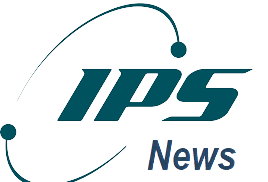Smart City IoT Power Requirements

Smart cities using the Internet of Things have grown in popularity. It improves public services, resource allocation, economic development, and life quality. Over 250 smart city initiatives in 178 cities are documented.
Electric circuit designers for smart cities IoT should address the following needs.
Mornsun Smart City IoT Power Supply Requirements
A UN estimate predicts 68% of the global population will live in cities by 2050. Smart cities employ the newest IoT technologies to gather and analyze data to allocate local resources and assets better. Data like these may enhance municipal activities, boost economic development, and reduce public resource inefficiencies.
Smart cities are created, developed, and implemented utilizing smart information and communications technology (ICT). Municipal governments are using cellular and LPWAN wireless technologies to connect and enhance infrastructure, efficiency, convenience, and quality of life for citizens and tourists.
Smart city solutions affect public transit and renewable energy. Singapore’s smart traffic management systems, New York City’s linked car infrastructure, London’s Smart Mobility Living Lab (SMLL), and Paris’ smart road safety and traffic management solutions are examples of smart city initiatives. Smart cities increase road safety, real-time traffic management, eco-friendly and smarter mobility, decrease yearly CO2 emissions, and fewer traffic deaths.
IoT technology’s smart city promise extends beyond transportation and safety. For example, IoT may minimize greenhouse gas emissions in smart cities. Post caps found that cities use 60%–80% of global energy. Cities may reduce their environmental impact via energy-efficient buildings, air quality monitoring, and renewable energy sources. The same Postcapes research found that smart city solutions may boost energy efficiency by 30% in 20 years.
Smart City IoT Challenges
First, IoT devices are shrinking and becoming more popular as wearables. Thus, IoT products must be small. Second, Second, IoT devise design must consider size and adaptability.
Second, as a core part of smart cities, IoT infrastructure must perform flawlessly despite the variety and complexity of duties without fragmenting the ecosystem. Third, any device failing or disturbing might prevent meeting citizen demands. Third, IoT infrastructure for creative city applications must operate well under data and operating loads without costing local governments more.
Thirdly, a smart city’s IT infrastructure must deliver real-time, effective, and efficient data processing and analytics independent of each IoT device’s operating environment and external interference, including severe weather. Thus, smart cities need an intelligent and automated infrastructure to manage exponential data production and enable long-term storage, processing, and analysis.
Finally, all these processes demand constant electrical power, which should be delivered effectively to minimize environmental damage or financial overruns. Disruptions or erroneous data collection might affect smart city citizens’ lifestyles and governments’ ability to make better communal choices.
Engineers must consider these problems when choosing a power supply for IoT smart city applications, whose power needs we shall discuss below.
IoT Smart Cities Power Requirements
Microcontrollers and sensors provide data to smart cities, but they need electricity. Custom power supply design is expensive, time-consuming, and risky. Hence most engineers avoid it. Unfortunately, not all power supplies are IoT-friendly.
IoT applications abound. AC/DC power supplies with high efficiency and low power consumption are optimum, followed by application-specific peripheral circuits for the greatest cost performance.
Mornsun‘s LS-R3 series is suited for onboard AC-DC power conversion in tight spaces. They may be coupled with various peripheral circuits to meet client EMC needs. These 1-15 W open-frame power supplies offer a stable and cheap low-power solution for industrial, IoT, and telecom applications in an ultra-compact SIP box.

![[pii_email_57585d6cf4028389f7c9]](https://ipsnews.info/wp-content/uploads/2022/03/pii_email_57585d6cf4028389f7c9.png)
![How to fix [pii_email_dfe907e4982308153863] Error Code](https://ipsnews.info/wp-content/uploads/2022/02/How-to-fix-pii_email_dfe907e4982308153863-Error-Code.jpg)


